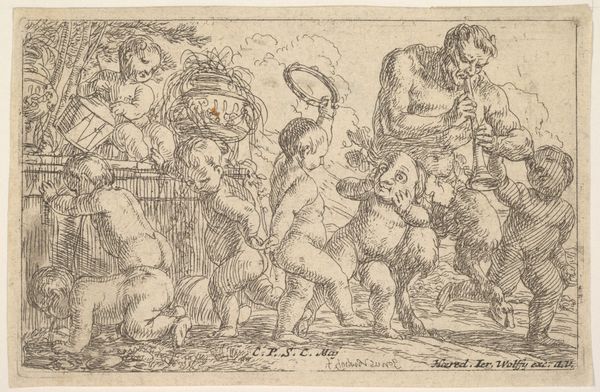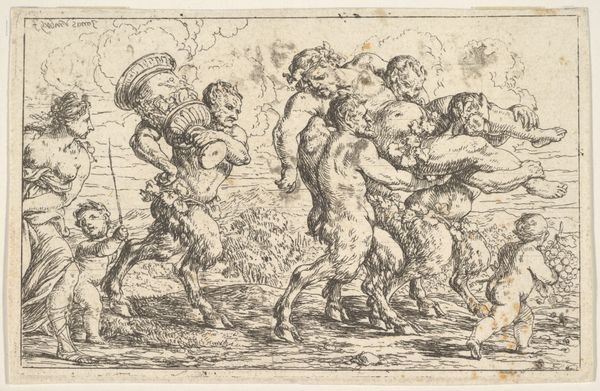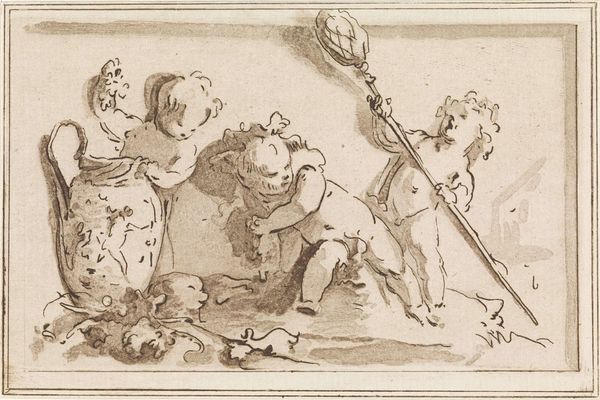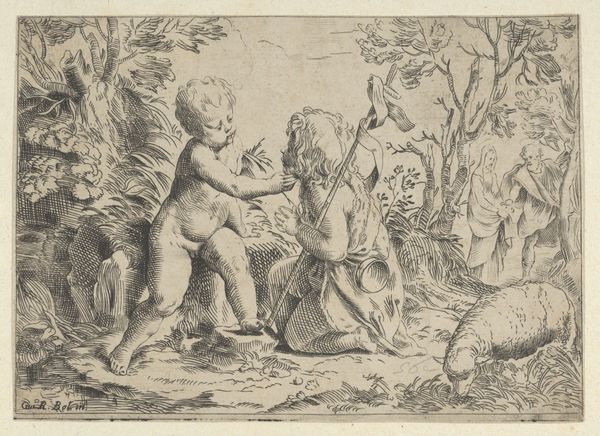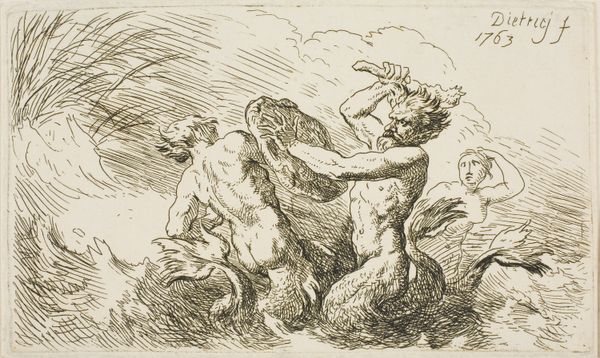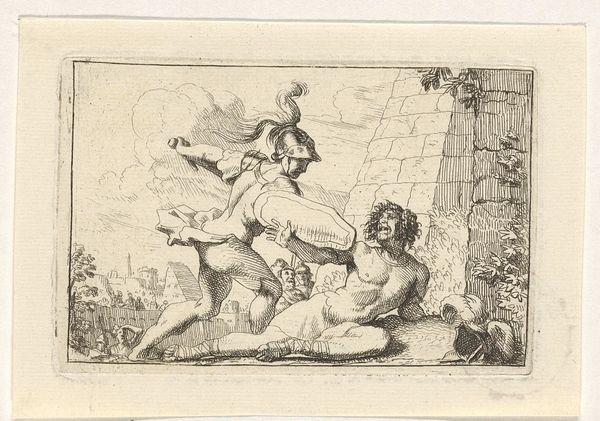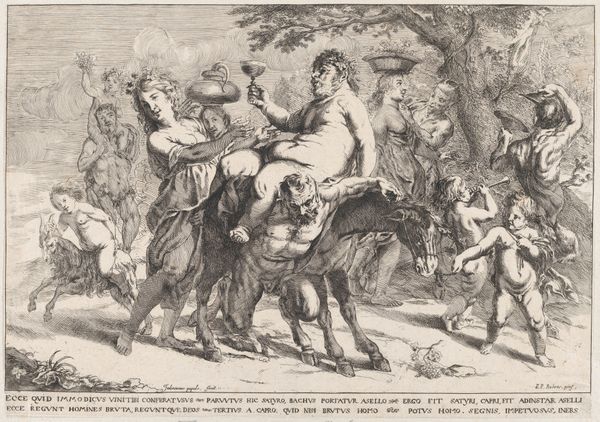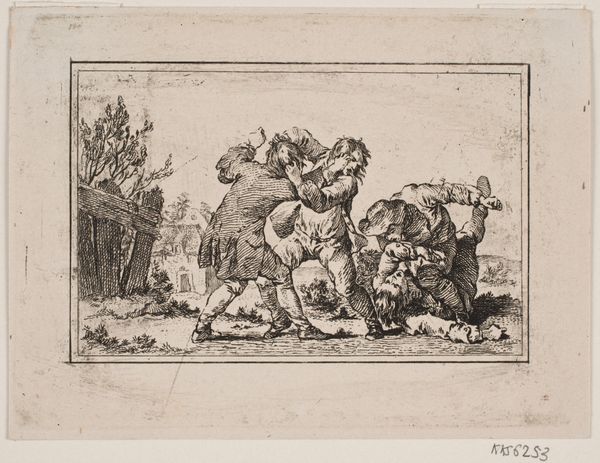
Bacchanal with satyr playing a lute and surrounded by four figures, who look toward a succession of three putti and a satyr dancing with cups and vines 1640 - 1660
0:00
0:00
print, etching, engraving
#
allegory
#
baroque
# print
#
etching
#
classical-realism
#
figuration
#
genre-painting
#
engraving
#
erotic-art
Dimensions: Sheet: 4 7/16 × 12 7/16 in. (11.2 × 31.6 cm)
Copyright: Public Domain
Editor: Here we have Giulio Carpioni's "Bacchanal with satyr playing a lute and surrounded by four figures, who look toward a succession of three putti and a satyr dancing with cups and vines," created between 1640 and 1660. The medium is etching. It strikes me as playful and somewhat chaotic, but the fine lines create an interesting tension. What can you tell me about the social context of the print-making at the time? Curator: What’s compelling here is that Carpioni used etching, a process allowing for more freedom and spontaneity compared to engraving. Etchings democratized art production by making art reproducible, impacting consumption, patronage, and audience perception of art. The line between "high art" and craft becomes blurred, doesn't it? Editor: Definitely. Seeing it reproduced changes its value. Do you think Carpioni's choice of etching was a conscious decision to challenge that hierarchy, or was it purely a matter of technique? Curator: Perhaps a bit of both. The "Bacchanal" subject matter itself, often associated with revelry and the overturning of social norms, combined with the readily available printmaking technique, speaks to accessibility. How might access and material affect the production value, if at all? Editor: I see what you mean! It is much different experiencing the physical strokes made by the artist, where that’s one of many or even thousands. Also, the raw materials surely held different values back then compared to now, for artist, art consumer, and art historians. Curator: Precisely. Consider, too, the paper, the ink, and the labor involved in producing multiple impressions. The art isn’t just in the image itself but in the entire system that brings that image into being. Editor: Thanks, it's a completely new dimension of analyzing art that I haven't quite considered before! Curator: It shifts the focus from the singular genius to the collective processes that make art possible, which changes how we interpret and understand its value, as well.

